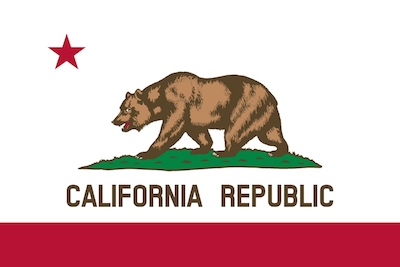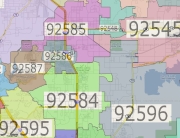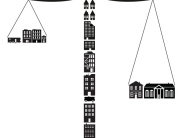Understanding California’s Property Taxes
A California property tax bill can be difficult to understand as charges on the bill come from a variety of sources. This is a summary of California property tax and a recognition of its importance in funding and running local governments. Highlights include property tax policy and the various charges we see one a property tax bill.
A Property Tax Bill Outlines Multiple Taxes and Fees.
California property tax bills communicate multiple taxes and fees that include the 1 percent rate set by California’s Proposition 13, Mello-Roos tax, voter-approved debt rate, parcel tax,and property value assessments. The 1 percent rate set by Proposition 13 is of specific importance, standing out as the primary bulk of tax on the property tax bill. The 1% rate is ubiquitous throughout every California county. Taxes based on the 1% rate and voter-approved dent rates are related to a property’s assessed value. The method for determining a property’s taxable value is put forth byThe California Constitution. In most cases a property’s assessed value equals the purchase price adjusted up 2% annually. The California Constitution states that any additional taxes and fees cannot be determined based on real estate value.
What’s One of the Largest Taxes in California? Property Tax
Californians can often pay more in property taxes than even personal income taxes to the state. Property tax is by far the largest state revenue source. California property tax revenue for 2014 is estimated to be roughly $56 billion.
Diverse Property Tax Base
Divers property types come under taxation in California. Proposition 13’s 1% rate applies to owner-occupied residential properties make up roughly 39% of California’s assessed real estate value. Investment and vacation residential properties make up 34 percent%. Finally, commercial properties make up about 28% of the property tax base. Some properties are exempt from the 1% property tax rate set forth by Prop 13. That includes property hospitals, government property, churches, and property run or owned by charitable non-profit organizations.
Local county governments get all the revenue from California Property Taxes.
Revenue from California property tax stays with the county that collects it. It’s used exclusively by local governments for things like schools, roads, parks, and public facilities. The distribution of property tax income is regulated by state law. The 1 percent rate goes out to 4,000 plus local governments. School districts and counties receive the bulk. However, each county distributes its property tax funds differently.
The California State Budget is drastically affected by property tax.
Property tax revenuesaredistributed locally. However, property taxes also affects the state budget. This is primarily because of the way the education system is financed. Property tax revenue from Prop 13 1% rate going to for local school districts brings down the overall cost of education for California. State property tax laws regarding distribution are prone to change. This often happens as lawmakers seek to reduce education program costs or funnel funds into other local projects that may usually be in the realm of the larger state budget.
Property Tax Revenue Local Distribution Has Some Issues.
Property tax revenue allocation laws pertaining to the Proposition 13 1%, again, are prone to change. The allocation is complex and difficult to understood. More transparency is necessary. In addition localities need to be able to shift allocation on the fly to address pressing issues in local life, society, and government. But the system is difficult to change as property tax laws are some of the most well-watched by the public, business, and other organizations. Any proposals for change will most likely stimulate opinions and action from various opposing interests and individuals.
California’s property tax system has strengths and room for improvement.
California’s property tax system shows strength, but also reveals room for improvement.Growth, stability, simplicity, neutrality, and equity-these are the five criteria tax policy is measured against. Since Propositions implementation in 1979, revenue from the 1% rate has grown much faster than the California’s overall economy. Revenue from property tax is extremely stable. Other revenues from California taxes are fickle because of the acquisition value assessment system. However, falling real estate values in California did cause recent fluctuation and lowering of revenues to local governments. When all is said and done, California localities may be seeing dependable revenue, but the property value assessment laws often see different treatments of similar taxpayers. To prove the point, new property owners can be taxed at higher rate than people who have maintained ownership of real estate for long period. Finally, California’s property tax system often has negative impacts on business and homeowner decisions about locating in California or expanding local business operations.
Understanding California’s Property Taxes
While not always an easy thing, understanding California’s Property Taxes is a passion for some professionals. If you have an issue with your property taxes, it is sometimes beneficial to consult with a property tax professional.














